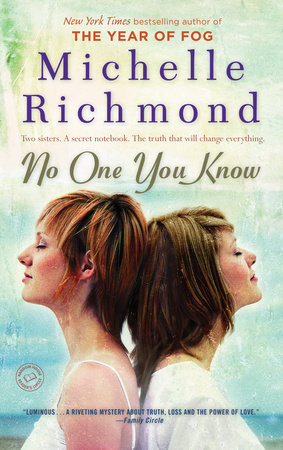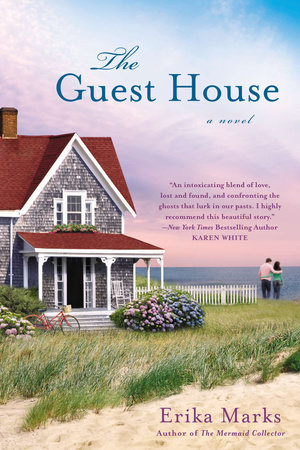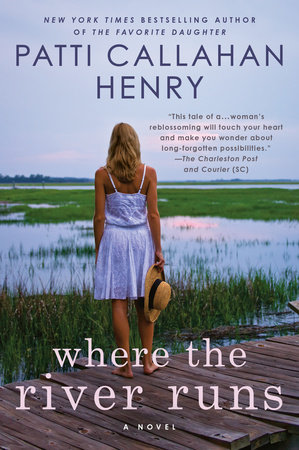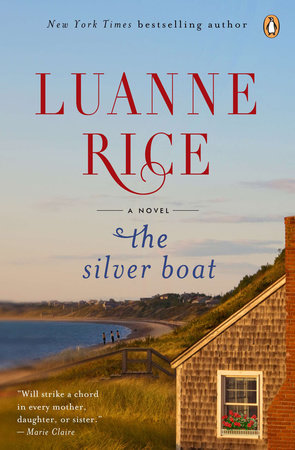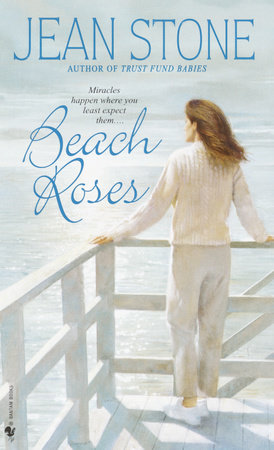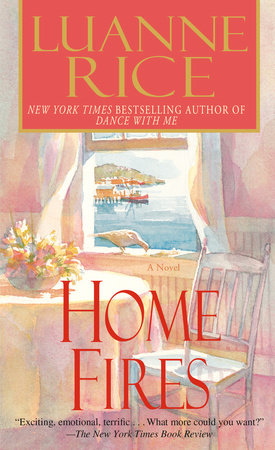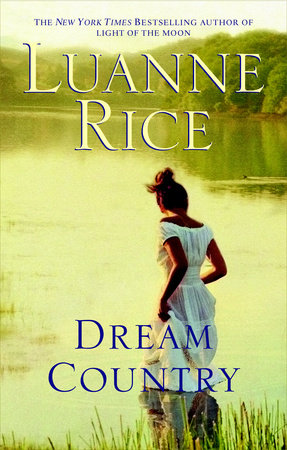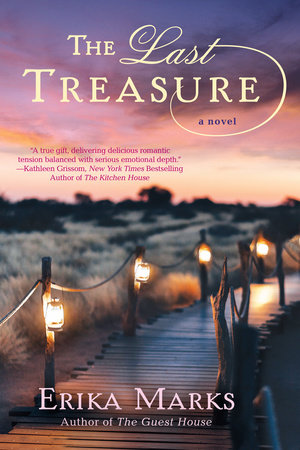A Conversation Between Michelle Richmond and Her Sisters
Michelle Richmond grew up in Mobile, Alabama, as the middle child in a household of three sisters. Her sisters Monica Richmond Taylor (an accountant and mother in Birmingham, Alabama) and Misty Richmond (a photographer in San Francisco), took the time to chat with Michelle about writing, reading, and family.
Misty: What was your inspiration for No One You Know? What about The Year of Fog?
Michelle: Part of what inspired No One You Know was the experience of being one of three sisters. After Lila’s death, Ellie realizes that there had been so much her sister kept private, even from her. The intimacies and complications of the sisterly bond were very compelling to me. I also knew from the start that I was interested in the fine line between fact and fiction, and the way stories shape our lives–the idea that the stories others tell about us can have enormous repercussions.
The Year of Fog came out of a desire to write a story that was deeply immersed in the atmosphere and character of my adopted home, San Francisco–but which would rely on universal experiences: the love for a child, the complexities of coping with guilt, the nature of obsession. I also wanted to write a novel in which the big event–in this case, the disappearance of a child–occurs on the first page, and everything thereafter is an examination of what happens in the lives of those who are left behind.
Monica: As I happen to know that math was one of your least favorite subjects in school, what prompted you to write a novel with a strong mathematical component?
Michelle: You’re so right about math being one of my least favorite subjects! I have nightmares to this day of walking into a university math class on the day of the final examinations, having never attended a single class. Writing about coffee was a way of indulging my passion; writing about math may have been a way of tackling my demons. I also thought it would be an interesting contrast between the sisters–Ellie, the coffee buyer, who experiences the world through her senses, and Lila, the math prodigy, who experienced the world through her intellect. I didn’t want math to overwhelm the novel, but I did want the flavor of mathematics to be part of the story. Ellie is as math-phobic as I am, but she is nonetheless able to appreciate some of the stories behind mathematics with a layperson’s eye. I’ve always been drawn to “found texts” in fiction, so it was great fun for me to have Ellie come across Lila’s math notebook from her days at Stanford.
Monica: Having grown up in the South, do you actually consider yourself a Southern writer, or a writer who was anxious to get out of the South?
Michelle: I think there’s definitely a Southern flavor to my writing, that sense of the meandering story that, hopefully, takes the reader off on unexpected paths. You may remember all those long drives we’d take with the family in the station wagon when we were young. I think of a novel as being something like a long drive through country roads. I know the starting point, and I have a pretty good idea of where I want to end up, but I have no idea how I’ll get there, which side trips I’ll take, and what I’ll find along the way. The process of discovery is what makes writing enjoyable.
Although The Year of Fog is set primarily in San Francisco, the narrator is, like me, a transplant from Alabama, and her Southern childhood is woven throughout the book. The new novel I’m working on features a protagonist from Mississippi who lives in San Francisco. My first novel, Dream of the Blue Room, is set partially in China and partially in a small Alabama town, and my story collection, The Girl in the Fall-Away Dress, is very much rooted in our Southern childhood. San Francisco is now my home, and it’s the place I love most in the world. But the South is the landscape of my childhood, the setting of all of my earliest memories and influences, and in that sense it will always be in my blood.
Monica: Are many of your characters based on people you know? If so, do you take a good bit of license when writing them into your books?
Michelle: I rarely base a major character on someone I know, but friends and acquaintances naturally make their way into my novels in bits and pieces–a facial tic here, a habit or bit of background there–and occasionally appear as minor characters. In The Year of Fog, for example, a character named Wiggins tells a story about being bitten by a monkey; this story was actually told to me by my friend Wiggins. I have a friend from school who appears in every one of my books, usually with a banjo or in some similar manifestation. And naturally, my husband will tell you that all the best men–like Nick Elliott in The Year of Fog–are based on him. Recently, at my twenty-year high school reunion, I promised several people that their names would appear in my next novel.
In No One You Know, there is one real person who appears as himself–Ben Fong-Torres. While his role in Ellie’s life is entirely fictionalized, I did try to describe him as accurately as possible, in the interests of doing justice to a very interesting real-life person.
The book that probably contains the most autobiographical material is my story collection, The Girl in the Fall-Away Dress. Gracie, the sister whose voice holds all of the stories together, is very similar to me. Flannery O’Connor said that any writer can base a lifetime of work on what happened before she was five. Certainly, my own first book was in many ways an attempt to understand and distill the experiences of my youth and young adulthood.
Monica and Misty: How closely do you believe the sisters in your books resemble your actual sisters?
Michelle: My characters are very different from my actual sisters, although you, Monica, being an accountant, are certainly the mathematician in our family! I think it’s probably also true that you possessed a kind of mystery in high school that I felt I never had, and you also have always been very good at making your own clothes–which I flub every time I try–but I imagine the similarities between you and Lila end there. And of course, Misty, I borrowed a lot from your knowledge when I made Abby (in The Year of Fog) a photographer. The character of Abby is nothing like you, but she does use a Holga– years ago, when the novel was just a seed in my mind, you gave me one.
Misty: Before you began writing full-time, you had a lot of jobs. I remember visiting you one summer at the University of Alabama in Tuscaloosa, and you had a temp job in the warehouse of an auto parts supplier, pulling spark plugs and fan belts from the shelves. What other jobs have you had?
Michelle: For about eight years I taught creative writing in the Bay Area. But before I began teaching, I worked as a waitress, a tanning salon attendant (which must rank pretty high in the “worst jobs known to recent college graduates” department), an advertising copywriter, and an account manager at a major PR firm in New York City. I spent a few months pounding the pavement in New York, selling credit processing services, which was laughable and somewhat disastrous, given my above-mentioned math deficiency. The best job I ever had, perhaps, was as the private English tutor for the president of a Chinese trading company. I was hired to work in the company’s U.S. office at the Empire State Building, but within two weeks of accepting the position I was on a plane to Beijing. Because my employer had very little time to be tutored, I spent most of my time wandering solo around China by bus and by train. My first novel, Dream of the Blue Room, came out of that eye-opening experience.
Misty: Speaking of work, how do you choose your main characters’ professions?
Michelle: I’m always interested in how people make their way in the world, and how their work shapes their lives. The Year of Fog is a book about memory, about how our memories can sometimes betray us and sometimes save us. The book opens with a scene on San Francisco’s Ocean Beach, in which Abby loses Emma, her fiancé’s little girl. Abby, who has always trusted her own vision, is forced to embark upon a search based almost entirely upon instinct. My hope was that her inability to make sense of the tragedy of Emma’s disappearance, her inability to compose and control events as she might her photography, added intensity to her inner struggle.
When I began writing No One You Know, I knew that Ellie should have a profession that reflected her nature: She’s a very sensory-oriented person who loves to wander around the globe. I’ve been obsessed with coffee for a long time; I drink it every morning, religiously, and I love the ritual of clearing the cobwebs in my brain before I begin my day. I had visited coffee farms in Central America a few years before, and I had that experience in the back of my mind as I wrote. Making Ellie a coffee buyer gave me a chance to explore coffee’s origins and to delve into some of the interesting stories behind the coffee culture. It also gave me an excuse to attend tastings, tour a coffee warehouse, and discover some wonderful cafes.
Monica: When we were growing up, I was always the one with my nose in a book. Who are your favorite authors?
Michelle: Yes, I remember how we’d be driving along these zigzag mountain roads on family vacations, and I’d be battling motion sickness while you were completely absorbed in your book! Now, I’m a constant reader. Authors who immediately come to mind are Jorge Luis Borges, Bohumil Hrabal, Vladimir Nabokov, Walker Percy, Eudora Welty, Ismael Kadare, Grace Paley, Richard Yates, Ian McEwan, E. B. White, Jane Bowles, George Orwell, Gustav Flaubert, Italo Calvino, Paul Auster, Jose Saramago, Milan Kundera, Lars Gustafsson, and Flannery O’Connor. I spend a lot of time reading to my son, and I’ve discovered a number of children’s book authors in the past few years, including Ian Falconer, whose Olivia books are absolutely delightful.
Monica: How do you find time to write with an energetic four-year-old?
Michelle: I used to have the luxury of spending a week writing and rewriting a page or two. That doesn’t happen anymore. I think that having a child, while diverting my attention and absorbing my worry and affection, has also clarified my thinking. I used to be able to accomplish very little with two or three hours of writing time. Now, I can get into a subject the moment I sit down to write, and totally immerse myself in it until it’s time to kick into mommy gear. People joke about “mommy brain”–being scattered, confused, forgetful–but I believe that, by necessity, many mothers become more focused and more efficient than they were before they had children, because the hours that one has available to devote entirely to work are suddenly a tiny fraction of what they used to be. Of course, I still spend a lot of time being scattered and confused–just not while I’m writing!
Misty: What are you working on now?
Michelle: My next novel takes place during a single day in San Francisco. The story centers on two adult sisters, whose long estrangement has recently ended. The narrator is a doctor of internal medicine on the cusp of her fortieth birthday, whose life has just undergone a pretty significant upheaval. Because I rarely talk about my work with anyone while I’m writing, I’ll say no more, for fear of losing my literary mojo while the novel is still in progress!
